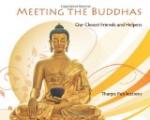Barry lived with, the monks for twelve years, and saved forty lives. Other St. Bernard dogs have been brave and wise, but Barry’s name stands first among them all.
Many great men have had dogs whom they loved and trusted. Sir Walter Scott, one of the most famous story-writers that ever lived, had several dogs. He used to take them with him whenever he went to walk. There was an old staghound named Maida, and a black greyhound called Hamlet, after one of Shakespeare’s heroes. Then there was a beautiful setter with long ears and a silky coat. Her name was Finette. Sir Walter would often stop and talk to these four-footed friends and they seemed to understand what he said. In one of his best stories a dog plays a very important part.
Dr. John Brown was another Scotch writer who loved dogs. He gave an account of his pets in a book called “Spare Hours.” He wrote the story of “Rab and his Friends,” a tribute of which any dog might be proud.
There was a great artist named Landseer, who painted his dogs’ pictures so wonderfully that we know he must have loved them very much. In one picture he shows his two dogs looking over his shoulder at his drawing. He gave them a very long name which means “Those who know all about it”; but I am sure he did not laugh at them unkindly. Dogs do not like to be laughed at any more than we do.
Odin was the name of one of Sir Edwin Landseer’s dogs, When we look at his portrait we can understand why the artist should have thus named him, for Odin was the all-wise god of the old Norsemen.
[Illustration: Odin. By Sir Edwin Landseer.]
Jack was a famous dog who was with the English soldiers during a great war in eastern Europe. He was not a dog of fine breed or gentle training. He had been rescued by one of the soldiers from a cruel death, and he gave in return his love and gratitude. He fought in one of the battles and saved his master’s life. When the fighting was over he used to go about the battlefield carrying a can of tea for the wounded men.
Mrs. Browning had a dog named Flush, to whom she wrote one of her poems. She was unable to leave her room for many long months of illness, but the little dog spent the weary days by her side, cheerfully giving up merrier company for her sake.
Lord Byron’s dog was named Boatswain and he is buried in the garden of the poet’s beautiful home. There is a monument to his memory and on it are these lines:
Near this spot
Are deposited the remains of one
Who possessed beauty without vanity,
Strength without insolence,
Courage without ferocity,
And all the virtues of man without his vices.
This praise, which would be unmeaning flattery
If inscribed over human ashes,
Is but a just tribute to the memory of
boatswain, a dog,
Who was born at Newfoundland, May, 1803,
And died at Newstead Abbey, Nov. 18, 1808.




